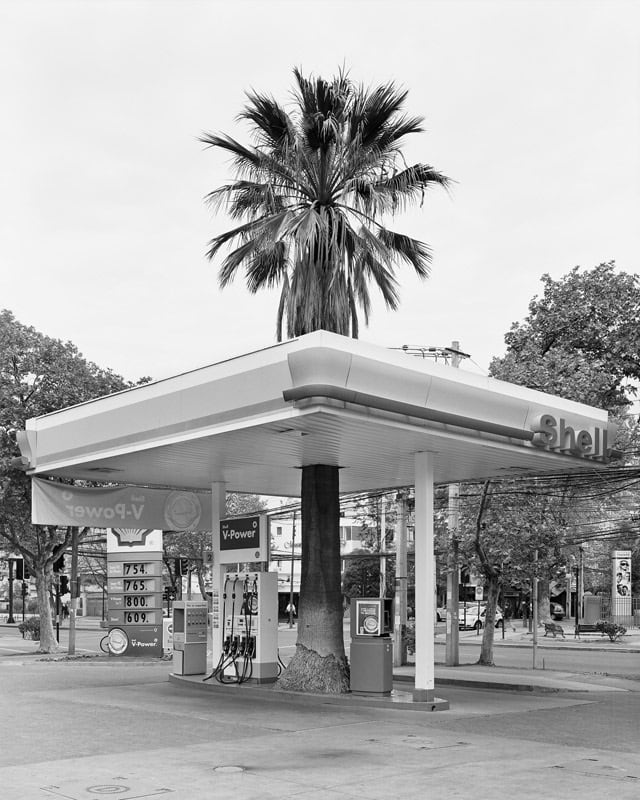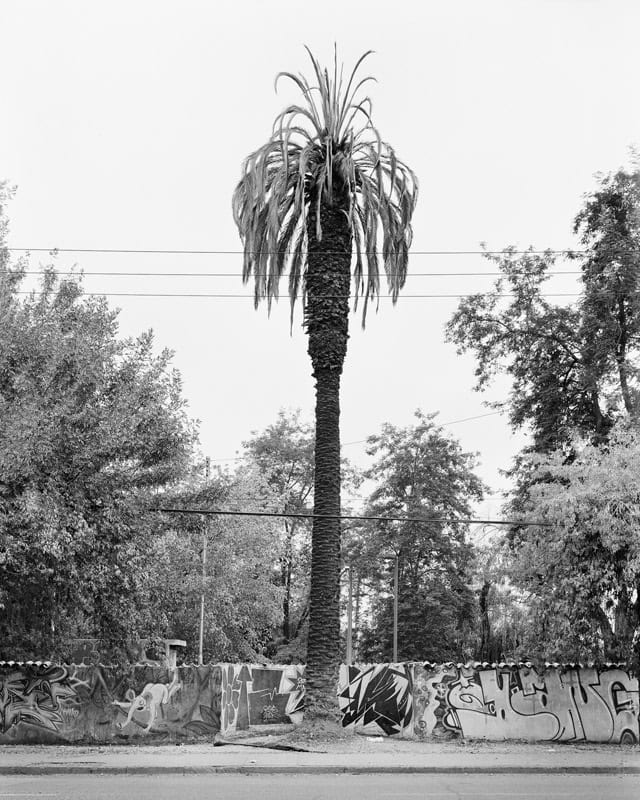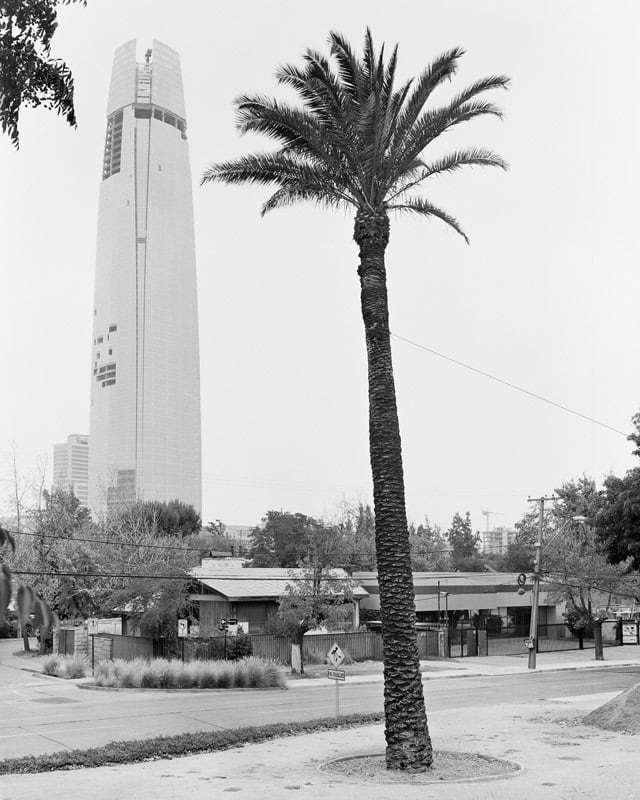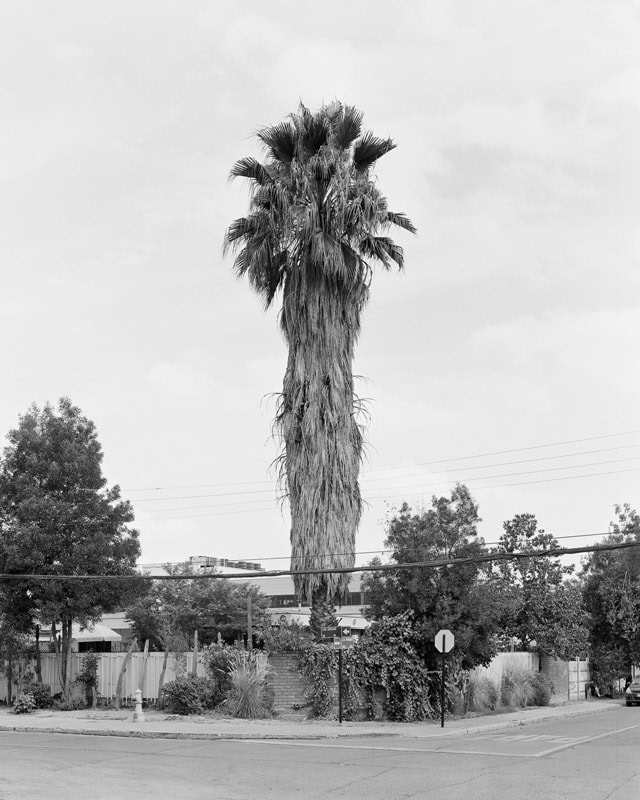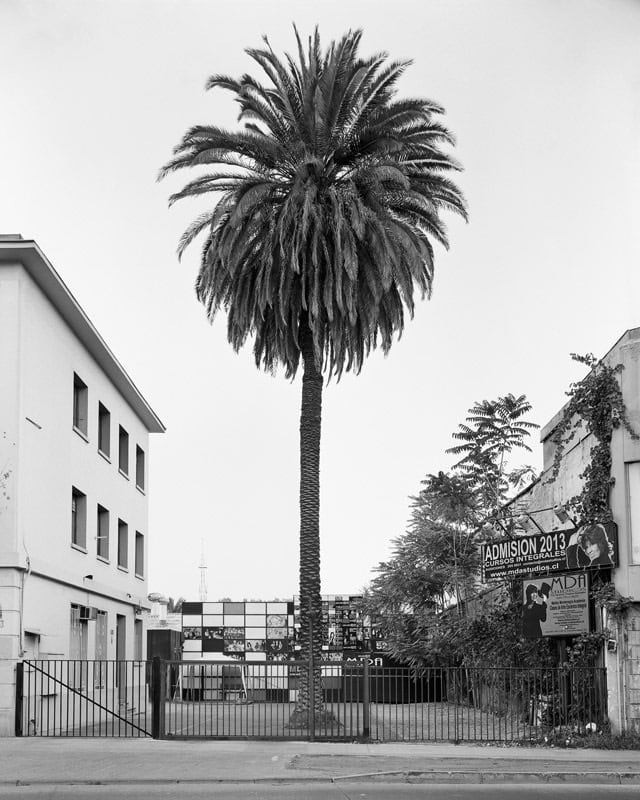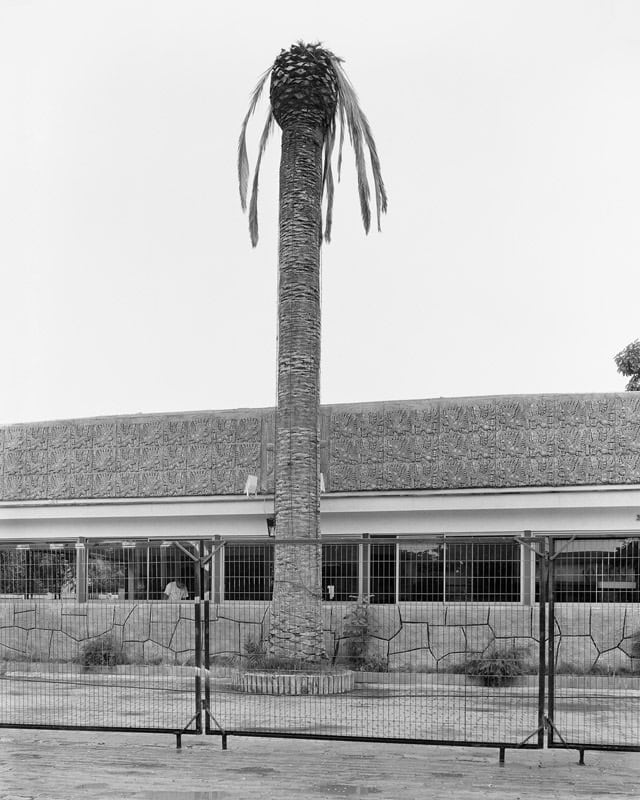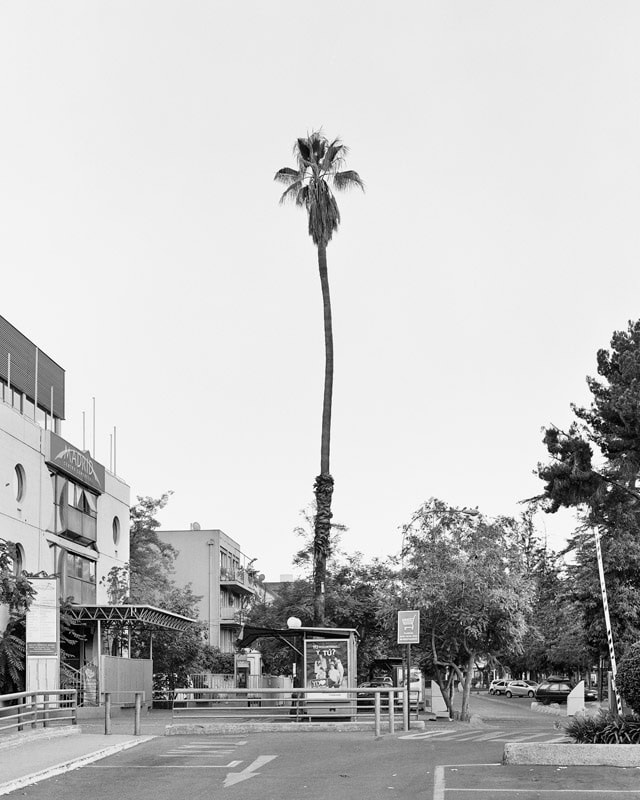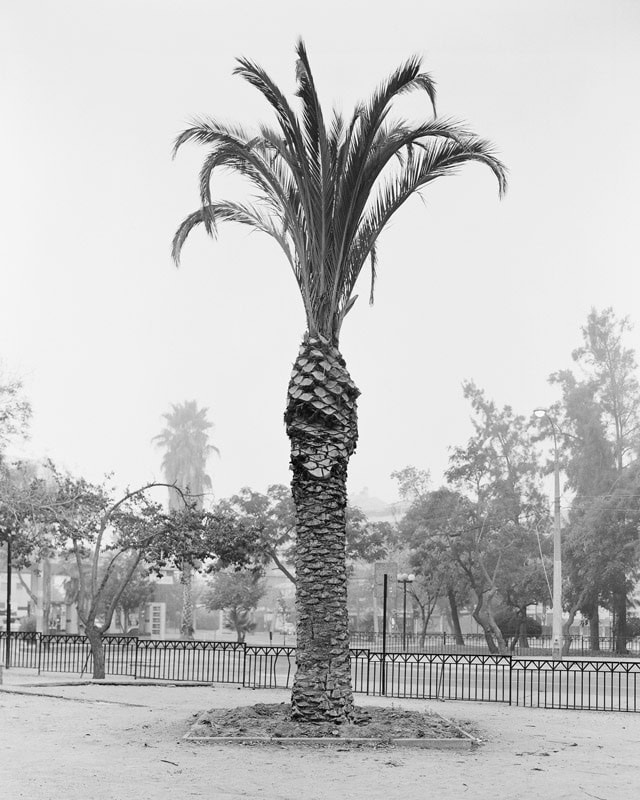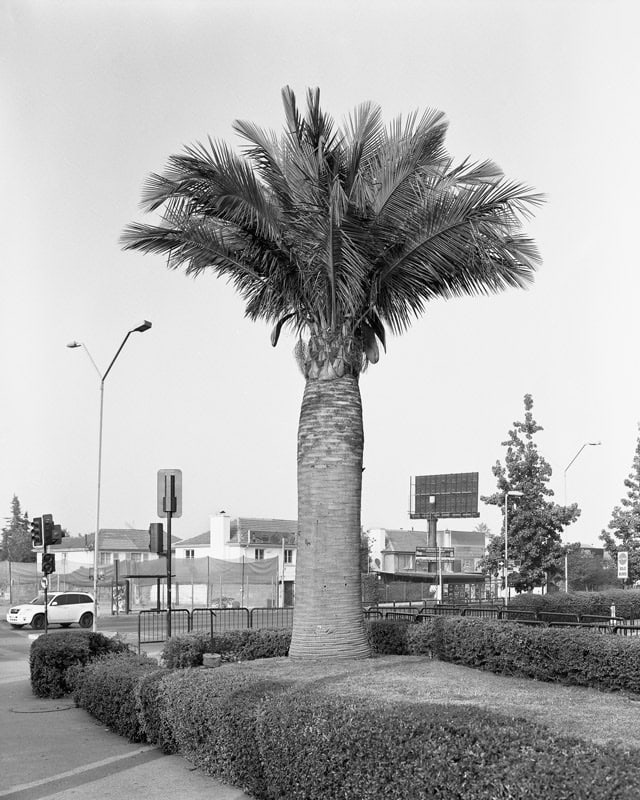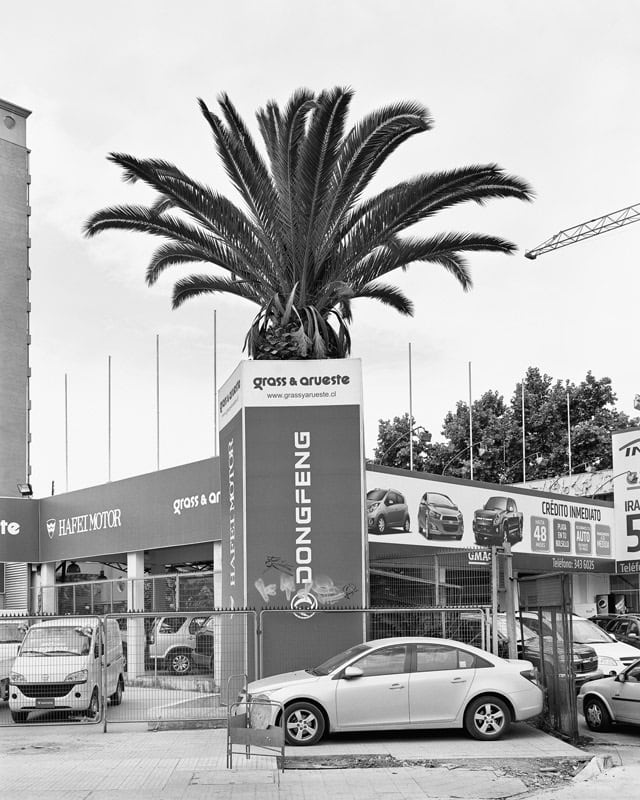Sebastian Mejia was born in Peru, he grew up in Colombia and studied photography at the School of Visual Arts in NY. He has exhibited his work in the Photographer’s Gallery in London, Fondation Cartier in Paris and the Museum of Contemporary Art of Chile among others. He currently resides in Santiago de Chile.
Mejia´s work has always been focusing on portraying the landscape, especially the urban landscape. His field of investigation focuses on the traces of primitive life that commonly goes unnoticed in the modern metropolis. Due to the serial character of the work, the absence of human presence highlights the anthropomorphic traits of natural shapes.
About ‘Quasi Oasis‘ – words by Sebastian Mejia:
The palm tree caught my attention because it is immediately recognizable and yet an incongruous presence in Santiago de Chile. It is a powerful vertical line marking the urban landscape. The trunk rising up above translates a strategy for survival: concentrating the energy in order to reach high up for sunshine and avoid the shade of surrounding trees, an interesting evolutionary solution. The way in which it defies gravity is also moving to me. We are all confronted with similar constraints, and the palm tree elegantly handles them, reaching up above our heads like a monument that has witnessed the city changing at its feet.
Unless this is about a single palm tree, planted here and there to serve as a reference point, they seem like botanical obelisks of which the artist delivers an archeological chronicle. The work offers clear affinities with Ed Ruscha´s, his inventories of gas stations and parking lots in Los Angeles, and with Robert Adams, with whom he shares an inclination for man-altered nature. And yet, it causes a surprise comparable to the early photographers in the heliographic mission launched by Merimee to document monuments that were only starting to be considered historical.
